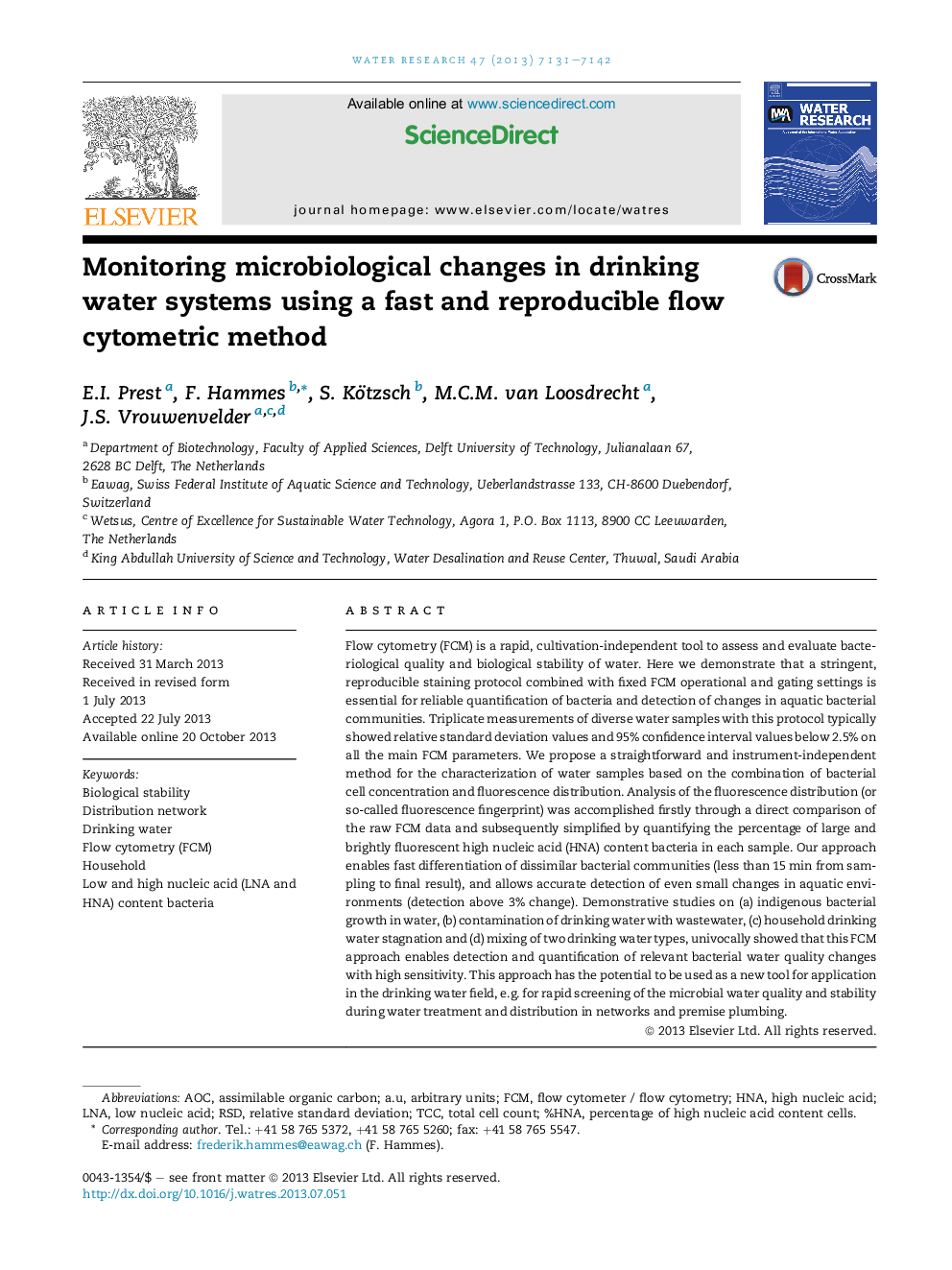| کد مقاله | کد نشریه | سال انتشار | مقاله انگلیسی | نسخه تمام متن |
|---|---|---|---|---|
| 4481751 | 1316832 | 2013 | 12 صفحه PDF | دانلود رایگان |

• A reproducible staining method is essential for accurate flow cytometric results.
• Fast and sensitive water analysis is achieved with a simple and easy approach.
• The proposed approach enables sample characterization and detection of change.
• Detection of regrowth, contamination, mixing and stagnation effects is demonstrated.
• The method has potential for drinking water monitoring applications.
Flow cytometry (FCM) is a rapid, cultivation-independent tool to assess and evaluate bacteriological quality and biological stability of water. Here we demonstrate that a stringent, reproducible staining protocol combined with fixed FCM operational and gating settings is essential for reliable quantification of bacteria and detection of changes in aquatic bacterial communities. Triplicate measurements of diverse water samples with this protocol typically showed relative standard deviation values and 95% confidence interval values below 2.5% on all the main FCM parameters. We propose a straightforward and instrument-independent method for the characterization of water samples based on the combination of bacterial cell concentration and fluorescence distribution. Analysis of the fluorescence distribution (or so-called fluorescence fingerprint) was accomplished firstly through a direct comparison of the raw FCM data and subsequently simplified by quantifying the percentage of large and brightly fluorescent high nucleic acid (HNA) content bacteria in each sample. Our approach enables fast differentiation of dissimilar bacterial communities (less than 15 min from sampling to final result), and allows accurate detection of even small changes in aquatic environments (detection above 3% change). Demonstrative studies on (a) indigenous bacterial growth in water, (b) contamination of drinking water with wastewater, (c) household drinking water stagnation and (d) mixing of two drinking water types, univocally showed that this FCM approach enables detection and quantification of relevant bacterial water quality changes with high sensitivity. This approach has the potential to be used as a new tool for application in the drinking water field, e.g. for rapid screening of the microbial water quality and stability during water treatment and distribution in networks and premise plumbing.
Figure optionsDownload high-quality image (175 K)Download as PowerPoint slide
Journal: Water Research - Volume 47, Issue 19, 1 December 2013, Pages 7131–7142